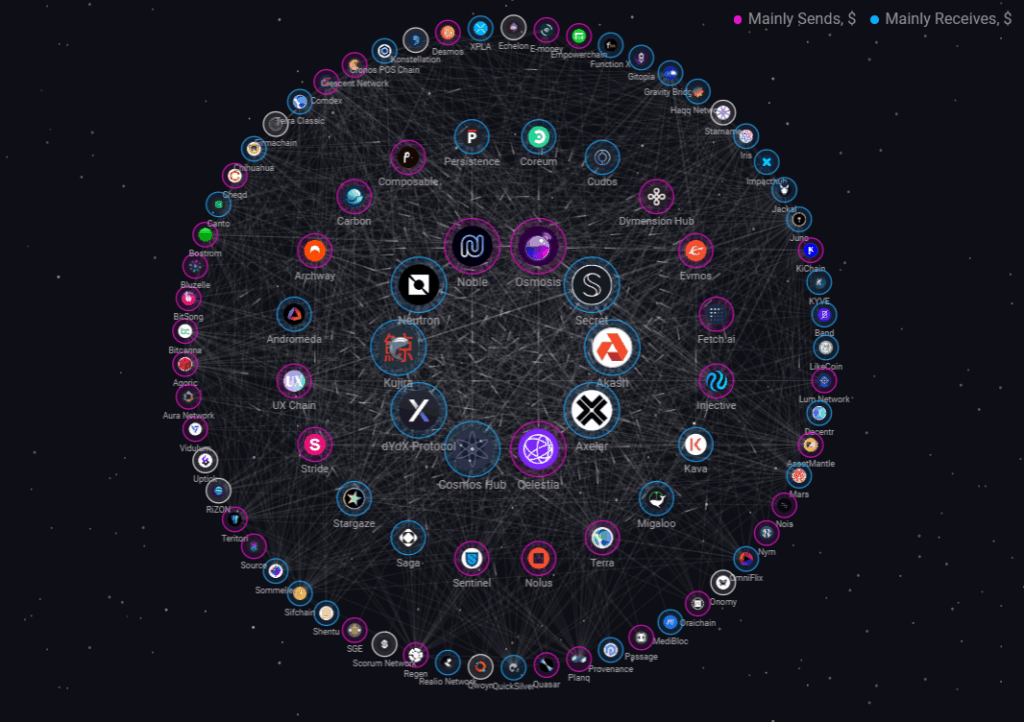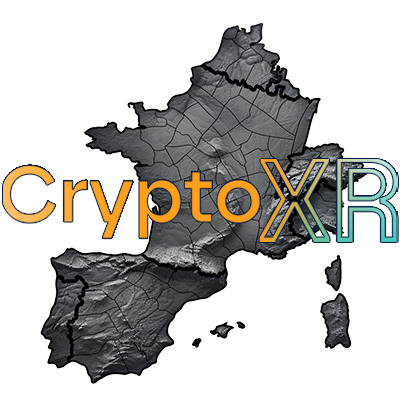The Cosmos ecosystem has transformed the blockchain landscape by creating a network of interconnected and sovereign chains. Dubbed the “Internet of blockchains,” Cosmos offers a solution to one of the field’s greatest challenges: interoperability. Let’s dive into this fascinating universe and discover why it represents a true revolution for users and stakers.
⚙️ Cosmos: Foundations and Architecture
Cosmos is a Layer-0 ecosystem and a blockchain also known as Interchain. Founded by Jae Kwon and Ethan Buchman, it was developed by the Interchain Foundation and the company Ignite (formerly Tendermint). After a successful ICO in 2017, the network was officially launched in 2019.
The Cosmos architecture relies on three essential layers:
- The application layer: processes transactions and updates the network state
- The network layer: facilitates communication between zones and the hub
- The consensus mechanism layer: uses proof-of-stake to authenticate transactions
🔧 Key Tools of Cosmos
This architecture is made possible by three fundamental tools:
- Tendermint BFT ( CometBFT ) : a consensus engine that allows developers to easily add new zones to the network
- IBC (Inter-Blockchain Communication): the protocol that connects the different chains
- Cosmos SDK: a development kit that provides essential tools for creating new blockchains
💫 The Cosmos Hub and ATOM: The Heart of the Ecosystem
At the center of this ecosystem lies the Cosmos Hub, powered by the ATOM token. Since Cosmos V2, this hub plays a crucial role in inter-chain security. Blockchains in the ecosystem can “rent” security from the Cosmos Hub by borrowing its validators, reducing entry barriers for new chains.
To benefit from this shared security, chains must stake ATOM tokens, making it a true reserve currency. In exchange, the validators of the Cosmos Hub earn native tokens from the blockchains using their services.

🌐 The Flourishing Cosmos Blockchain Ecosystem
One of the most remarkable aspects of Cosmos is the diversity of projects developing within it. Here are some of the most notable blockchains built on Cosmos:
- Osmosis: flagship DEX (decentralized exchange) of the ecosystem
- Cronos: blockchain of Crypto.com
- Kava: lending and borrowing platform
- ThorChain: cross-chain exchange protocol
- dYdX: decentralized trading platform (in the process of migrating to Cosmos)
- Injective: decentralized derivatives exchange
- Elys Network: innovative DeFi infrastructure
This diversity reflects the flexibility and adaptability of the Cosmos SDK, which allows the creation of specialized blockchains while maintaining interoperability with the rest of the ecosystem.
🔍 Benefits for Users
The Cosmos ecosystem offers several significant benefits for users:
- Interoperability: Users can easily transfer assets between different blockchains in the ecosystem thanks to the IBC protocol.
- Diversity of Applications: From DeFi to NFTs, passing through trading platforms and payment solutions, the Cosmos ecosystem offers a wide range of applications.
- Fast and Low-Cost Transactions: Thanks to the modular architecture and efficient consensus mechanism, transactions are generally faster and cheaper than on other blockchains.
- Application Sovereignty: Each blockchain in the ecosystem can have its own rules and governance while remaining connected to the rest of the network.
💸 A Revolution for Stakers
For stakers, Cosmos represents a particularly interesting opportunity:
- Attractive Yields: Staking ATOM and tokens from chains within the ecosystem often offers competitive yields.
- Diversification: The ability to stake on different chains within the ecosystem allows for investment and risk diversification.
- Active Governance: Stakers can actively participate in the governance of multiple chains, thus influencing the ecosystem’s development.
- Multi-Token Rewards: With shared security, Cosmos Hub validators can receive rewards in different native tokens.
- Liquid Staking: Many liquid staking solutions are developing within the ecosystem, allowing stakers to maintain asset liquidity while generating yields.
⚖️ Challenges and Future Perspectives
Despite its many benefits, the Cosmos ecosystem faces several challenges:
- Competition: Other interoperability solutions like Polkadot are also developing.
- Complexity: The diversity of chains and tokens can create some complexity for new users.
- Security: Although the shared security system is innovative, it introduces new potential risk vectors.
However, future prospects remain promising. With the growing adoption of the IBC protocol, continuous improvements to the Cosmos SDK, and the development of new specialized chains, the ecosystem continues to expand and innovate.
🏆 Conclusion
The Cosmos ecosystem represents a true revolution in the world of blockchains. By enabling the creation of sovereign yet interconnected chains, it offers unparalleled flexibility and interoperability. For users and stakers, this translates into a richer, more diverse, and potentially more profitable experience.
As we move towards an increasingly decentralized future, Cosmos seems well-positioned to play a central role in this transformation, as the true “Internet of blockchains.”
Stake with us







